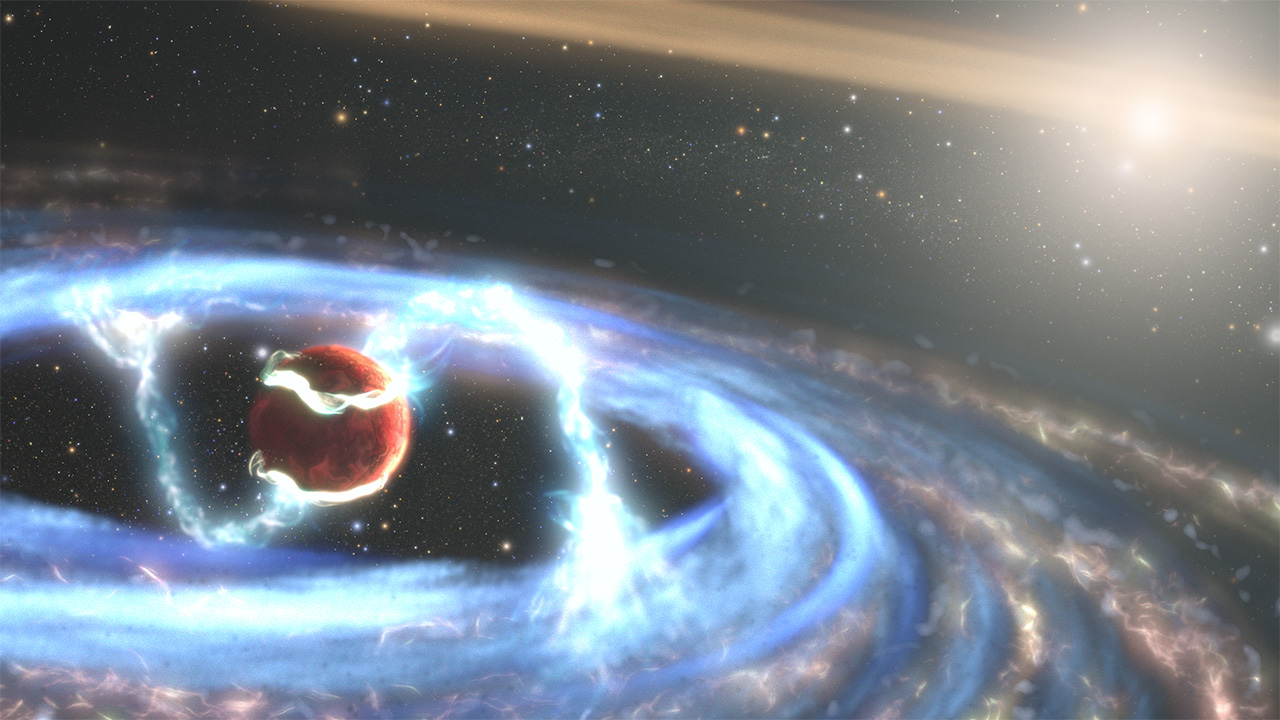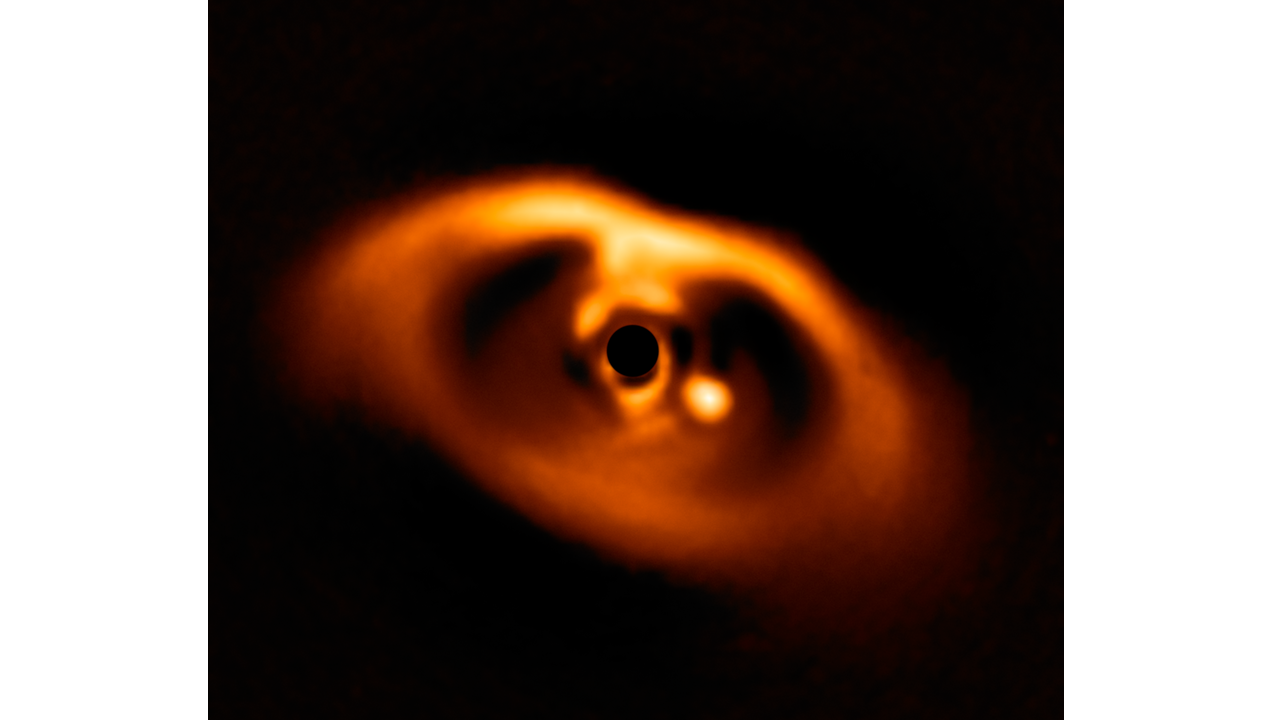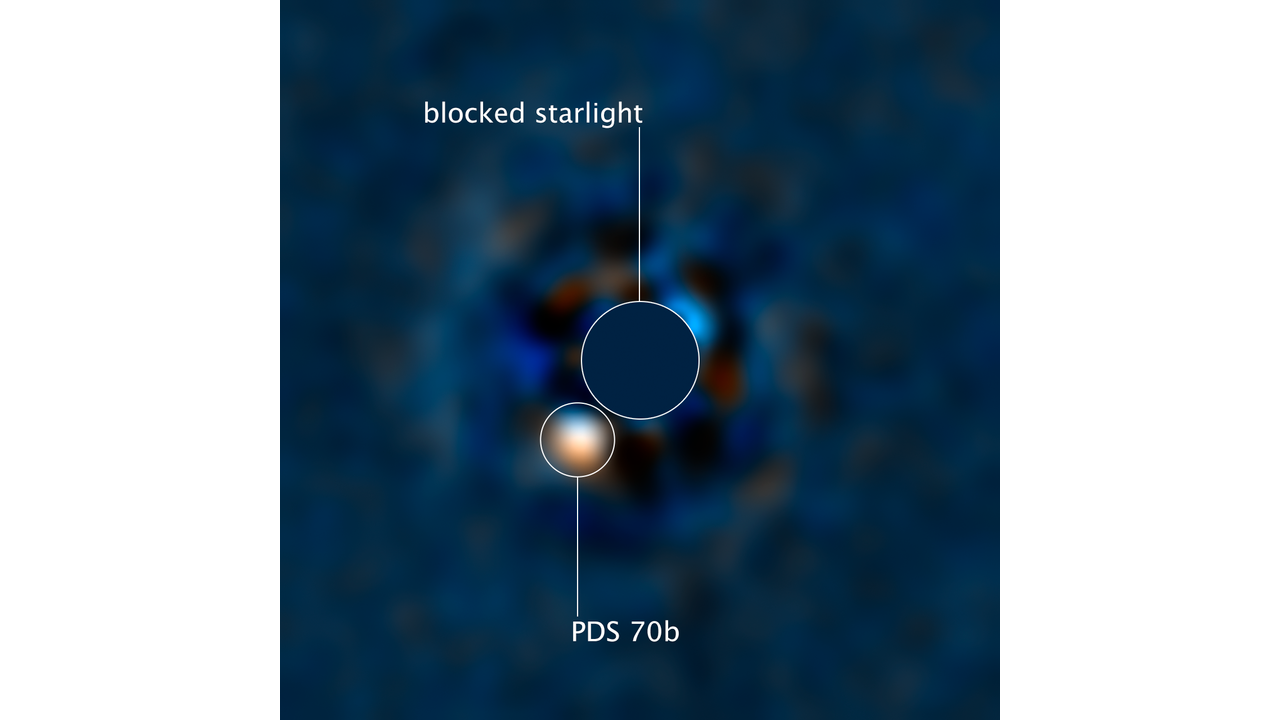The youngest exoplanet found by the Hubble telescope is the size of Jupiter (and still growing)

The Hubble Space Telescope has peered out into the cosmos and spotted its youngest exoplanet yet, a giant world 379 light-years from Earth that's still growing.
Planets form as dust and gas, swirling around in a circumstellar disk surrounding their star, collides and condenses to slowly become a "ball." Far out in the constellation Centaurus, Hubble has spotted a planet still coming together. The young gas giant exoplanet, designated PDS 70b, is "just" 5 million years old, Hubble scientists said. While the planet is still gathering mass, pulling it from the young star it orbits, it's already huge — roughly the size of Jupiter.
In a new study, scientists took advantage of this unique opportunity to study a planet in its formative years like PDS 70b with Hubble's telescope eye. .
"This system is so exciting because we can witness the formation of a planet," co-author Yifan Zhou, also of the University of Texas at Austin, said in a statement. "This is the youngest bona fide planet Hubble has ever directly imaged."
Related: 7 ways to discover alien planets

The researchers were able to utilize Hubble's ultraviolet light sensitivity, which allows them to spot and measure radiation from the hot gas that falls into forming planets, the researchers directly measured the mass growth rate of PDS 70b.
"Hubble's observations allowed us to estimate how fast the planet is gaining mass," Zhou said. This is the first time researchers have been able to measure the planet's mass growth rate.
Get the Space.com Newsletter
Breaking space news, the latest updates on rocket launches, skywatching events and more!
They also were able to directly image the planet and found that it seems to be coming to the end of its formation process.
Additionally, the team saw a number of "hot spots'' glowing in ultraviolet light, which Hubble is attuned to detect. These hot spots, the researchers think, are caused by hot material that extends down to the planet's surface from magnetic field lines that stretch from the planet's atmosphere to its star's circumstellar disk.

"If this material follows columns from the disk onto the planet, it would cause local hot spots," Zhou said. "These hot spots could be at least 10 times hotter than the temperature of the planet."
While Hubble has spotted over 4,000 exoplanets thus far, on about 15 have been directly imaged, according to the statement. Additionally, most of those 15 exoplanets have looked like dots in photos, as they are so far away and small.
More: This strange lava-rich alien planet is making itself a new atmosphere
"We just don’t know very much about how giant planets grow," study author Brendan Bowler of the University of Texas at Austin, said in the same statement. "This planetary system gives us the first opportunity to witness material falling onto a planet. Our results open up a new area for this research."
These observations of PDS 70b aren't a complete picture of the exoplanet, researchers acknowledged in their statement. Additional data is needed to confirm the mass growth rate and explore the planet further. Studying PDS 70b in more detail can help shed light on how similar gas giant planets form.
While studying PDS 70b,, researchers used a new technique that they think "paves a new route for further exoplanet research, especially during a planet's formative years," according to the statement. In this technique, Zhou removed the glare coming from the star in the PDS 70b system.
Stellar glare can be a challenge for scientists studying far-off objects like this exoplanet, and researchers often have trouble studying exoplanets that are close to their host stars. So, by removing the glare the team got a better look at the planet and they paved the way for future researchers to study planets that are closer to their host stars.
"Thirty-one years after launch, we’re still finding new ways to use Hubble," Bowler added. " With future observations, we could potentially discover when the majority of the gas and dust falls onto their planets and if it does so at a constant rate."
Email Chelsea Gohd at cgohd@space.com or follow her on Twitter @chelsea_gohd. Follow us on Twitter @Spacedotcom and on Facebook.
Join our Space Forums to keep talking space on the latest missions, night sky and more! And if you have a news tip, correction or comment, let us know at: community@space.com.

Chelsea “Foxanne” Gohd joined Space.com in 2018 and is now a Senior Writer, writing about everything from climate change to planetary science and human spaceflight in both articles and on-camera in videos. With a degree in Public Health and biological sciences, Chelsea has written and worked for institutions including the American Museum of Natural History, Scientific American, Discover Magazine Blog, Astronomy Magazine and Live Science. When not writing, editing or filming something space-y, Chelsea "Foxanne" Gohd is writing music and performing as Foxanne, even launching a song to space in 2021 with Inspiration4. You can follow her on Twitter @chelsea_gohd and @foxannemusic.









